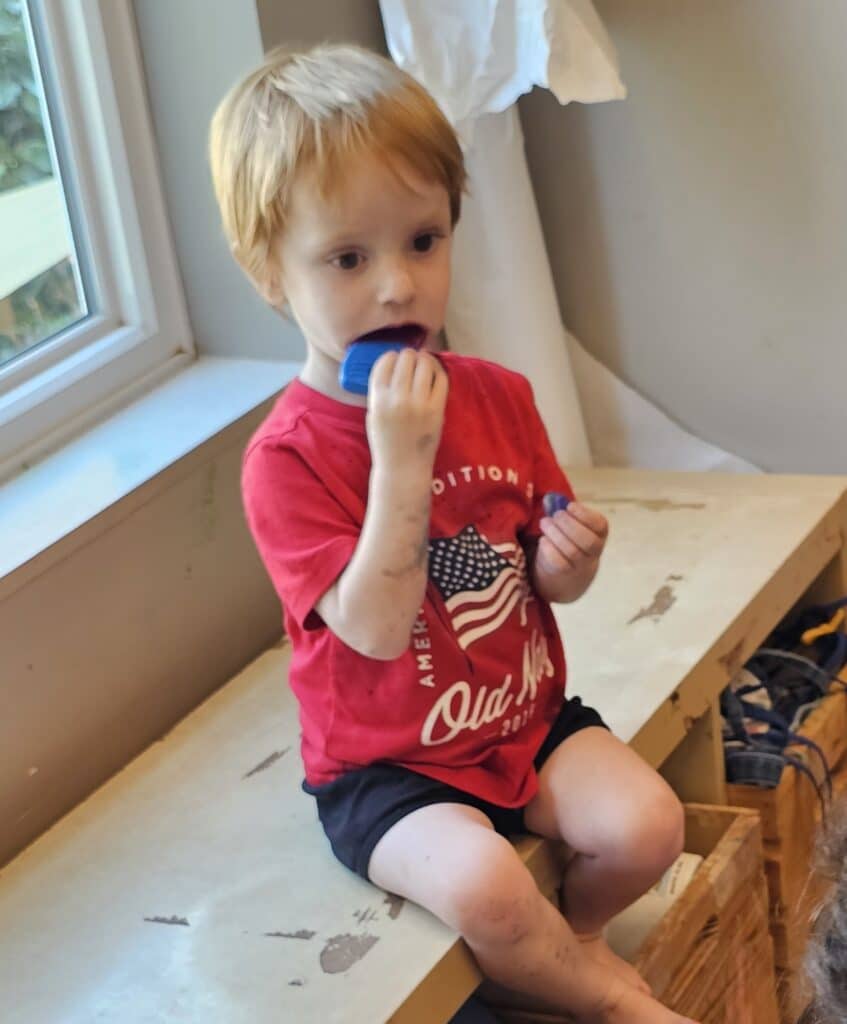Under-stimulated or Overstimulated?

I was reading an interesting early childhood book entitled The Discontented Baby that challenged my usual view of children as overstimulated. Immediately, I disagreed with the author’s assertion that children are under-stimulated, thinking of all the well-meaning parents shaking toys in front of babies’ faces, and carting toddlers to enrichment activities. I saw overstimulated not under-stimulated children, thinking of the constant exposure to the light and noise pollution of T.V.s, electronics, street lights, city noise, and such. Surely discounting this book, I thought of the children overstimulated by the bombardment of supposedly stimulating baby toys that beep, buzz, sing, vibrate, and bounce.
I read on despite my skepticism and found myself nodding to her description of under-stimulated babies in bare cribs, staying home with just one caregiver, inside long hours of the day, with materials that rarely challenged them physically or intellectually. I began to think differently about the word stimulation. Like the word entertainment, I find stimulation a triggering word because it seems to put young children in a passive role and portrays the outside world just acting on them. But what is an appropriately healthy stimulating environment for young children like?
Healthy stimulation means a lot of physical touch. Babies need to be held, cuddled, carried, massaged, bathed, changed, kissed, and did I mention cuddled? Toddlers too need a lot of touch; they run in for a hug, tackle hugs are even better, they plop down in your lap or reach up to be carried. Our need for touch doesn’t disappear as we get older; a reassuring hand on your arm, a hug from a good friend, or leaning against your partner in the car and on the couch all meet our need for touch. Some research has indicated that the elderly are not getting enough touch as they age and it is negatively impacting their health.
Back to babies, healthy stimulation means children’s senses are engaged; they are tasting edible plants and diverse foods. They are smelling things like homemade cooking, the fresh cut grass, the rain and the flowers. Appropriate stimulation means children are experiencing the light of the morning sun and the dark of night, essential to setting their circadian clocks. Healthy stimulation means that children have a space to move, stretch, reach, climb, and balance. Young children need to experience diverse weights, textures, colors, and sizes. Children need to touch, move, smell, and taste, not just see. Plus, we know from research that children need to experience the movement of their body in space and weight against their joints, proprioception, and vestibular stimulation. I thought back to another awesome early childhood book Balanced and Barefoot which talked about the importance of these sensory rich environments for children.
When I first started to think about children as under-stimulated, I thought “we need a balance so children are appropriately-stimulated,” but actually that’s not the case. It’s not about balance; it’s about different activities. Sadly, the same toys that overstimulate children like plastic noisemakers hanging from their car seat also under-stimulate children in their absences of complexity (read more about car seats and car seat toys). The T.V.s both overstimulate children with constantly changing camera angles and under-stimulate them by providing nothing to touch, taste, or smell. Engaging children in an appropriately stimulating, sensory rich environment will take more intentionality from adults. This reminds me of a quote from child development researcher Allison Gopnik, “One of the things I say is from an evolutionary point of view: probably the ideal rich environment for a baby includes more mud, livestock, and relatives than most of us could tolerate nowadays.” Rather than seeing children as being over or under stimulated, it is time intentional caregivers look at the details of the senses that are being engaged.
Categories: Challenging Behaviors, Child Care
Tags:
